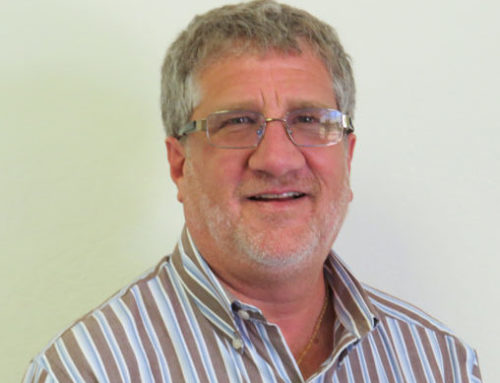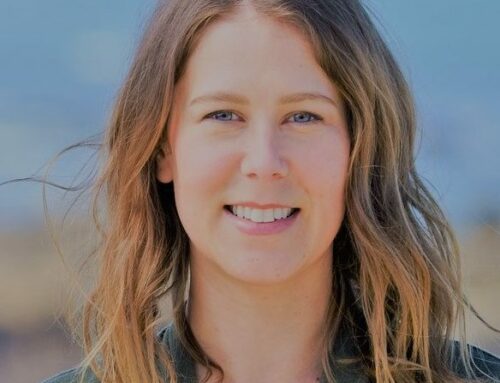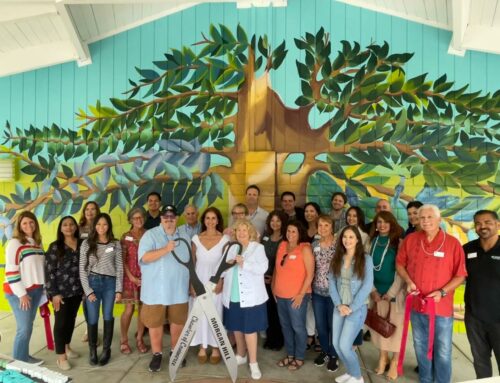1,200 runners can furiously paddle on top of the surface, getting tired and sweaty, and having the time of our lives.
![]()
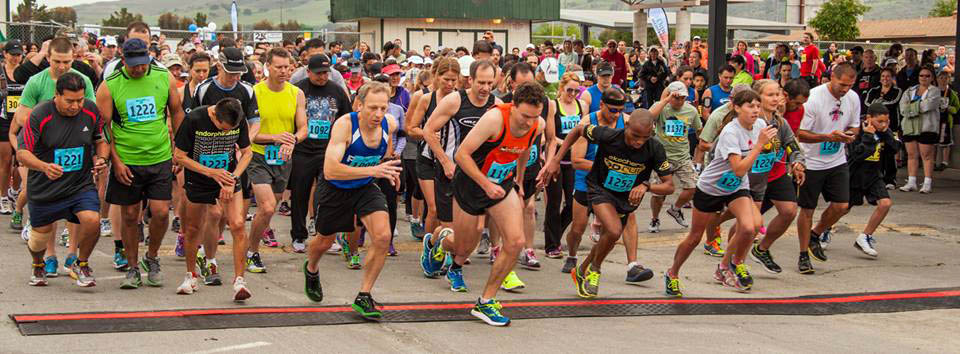
By Craig Lore

 Running is the very first sport.
Running is the very first sport.
I took up running because it’s such a sexy and romantic sport, and I thought it would make me rich and famous, but, instead, it just made me dirty, tired, and sweaty. And I kind of loved that. Running is literally built into our DNA.
Two and a half million years ago, we stood upright on two legs, freed up our hands to start a running watch, or adjust our sunglasses, and we were off to the races. Thanks to more than three million sweat glands, a physiology that sets lactic acid aside for future metabolism, and a huge brain that can visualize a finish line that’s beyond the immediate horizon, you get the greatest mammalian endurance runner on the planet.
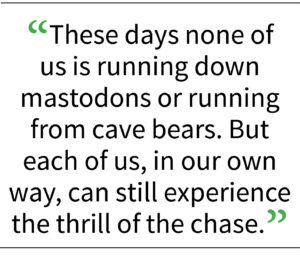 You get the woman I saw on the two-mile track at Harvey Bear County Park who ran while pushing the baby in a stroller, encouraging her daughter — on a bicycle with training wheels — to keep up, and holding the leash to the dog. You get more than 60 million people in America participating in running, more than 51,000 finishers of the New York City Marathon, according to data from 2017 on statstica.com.
You get the woman I saw on the two-mile track at Harvey Bear County Park who ran while pushing the baby in a stroller, encouraging her daughter — on a bicycle with training wheels — to keep up, and holding the leash to the dog. You get more than 60 million people in America participating in running, more than 51,000 finishers of the New York City Marathon, according to data from 2017 on statstica.com.
“I became a runner when I was four,” said my younger brother, Jeffery Lore, 65, of Sacramento. “I was in a race at a local park, and I surprised myself and won! It was fun, and I felt free.”
Everyone knows running is healthy for you and, compared to most other sports, essentially, free. About 18.1 million people in the U.S. registered for road races in 2018, according to Running USA’s 2019 U.S. Running Trends Report. They actually paid money to run some distance they could have done for nothing.
So what motivates people to pay money to enter a race when all of these benefits can be had any day of the week for nothing?
“Running is a part of me,” Jeff said. “I’ve never been a high placer in races, but I still have that sense of competition. For me, racing is about the joy of the run, the feel of the crowd, the experience, the validation for myself, and the completion. I like the social part of it.”
These days none of us is running down mastodons or running from cave bears. But each of us, in our own way, can still experience the thrill of the chase.
Ken Oliver, 60, of Morgan Hill, agrees: “Racing is about camaraderie. They’re to test yourself, add another milestone, and compare your results from one year to the next.”
 The American Association of University Women (AAUW) Morgan Hill branch, founded in 1981, introduced the Morgan Hill Wildflower 2k, 5k,10k race in 1984 in the midst of the burgeoning running boom. From that year to this year’s 39th running, their goal has always been to produce a quality local race for runners that involved all their members and benefited women and girls in our community in the form of “scholarships, leadership programs for women and girls, community grants, and other programming supporting equity for women and girls.”
The American Association of University Women (AAUW) Morgan Hill branch, founded in 1981, introduced the Morgan Hill Wildflower 2k, 5k,10k race in 1984 in the midst of the burgeoning running boom. From that year to this year’s 39th running, their goal has always been to produce a quality local race for runners that involved all their members and benefited women and girls in our community in the form of “scholarships, leadership programs for women and girls, community grants, and other programming supporting equity for women and girls.”
 Runners are pretty simple folks. All we need is a well-marked course, accurate timing, a T-shirt, water during and after the race, and snacks afterward. AAUW of Morgan Hill does all of this and more. During the years, the Wildflower Run has kept pace with runner’s needs and desires: electronic chip timing, certified 10K course, free professional photography while adding events to draw more participation, such as the 5K stroller event, 2K Senior Run/Walk. It helps to know that AAUW Morgan Hill is a nonprofit organization and all proceeds stay local.
Runners are pretty simple folks. All we need is a well-marked course, accurate timing, a T-shirt, water during and after the race, and snacks afterward. AAUW of Morgan Hill does all of this and more. During the years, the Wildflower Run has kept pace with runner’s needs and desires: electronic chip timing, certified 10K course, free professional photography while adding events to draw more participation, such as the 5K stroller event, 2K Senior Run/Walk. It helps to know that AAUW Morgan Hill is a nonprofit organization and all proceeds stay local.
Running is a simple act. Running the Wildflower races is not: AAUW Morgan Hill does all the furious paddling beneath the surface so that 1,200 runners can furiously paddle on top of the surface, getting tired and sweaty, and having the time of our lives.
An avid San Martin runner, Craig Lore is a retired English professor with a career at San Jose State University. He wrote this column for Morgan Hill Life.


